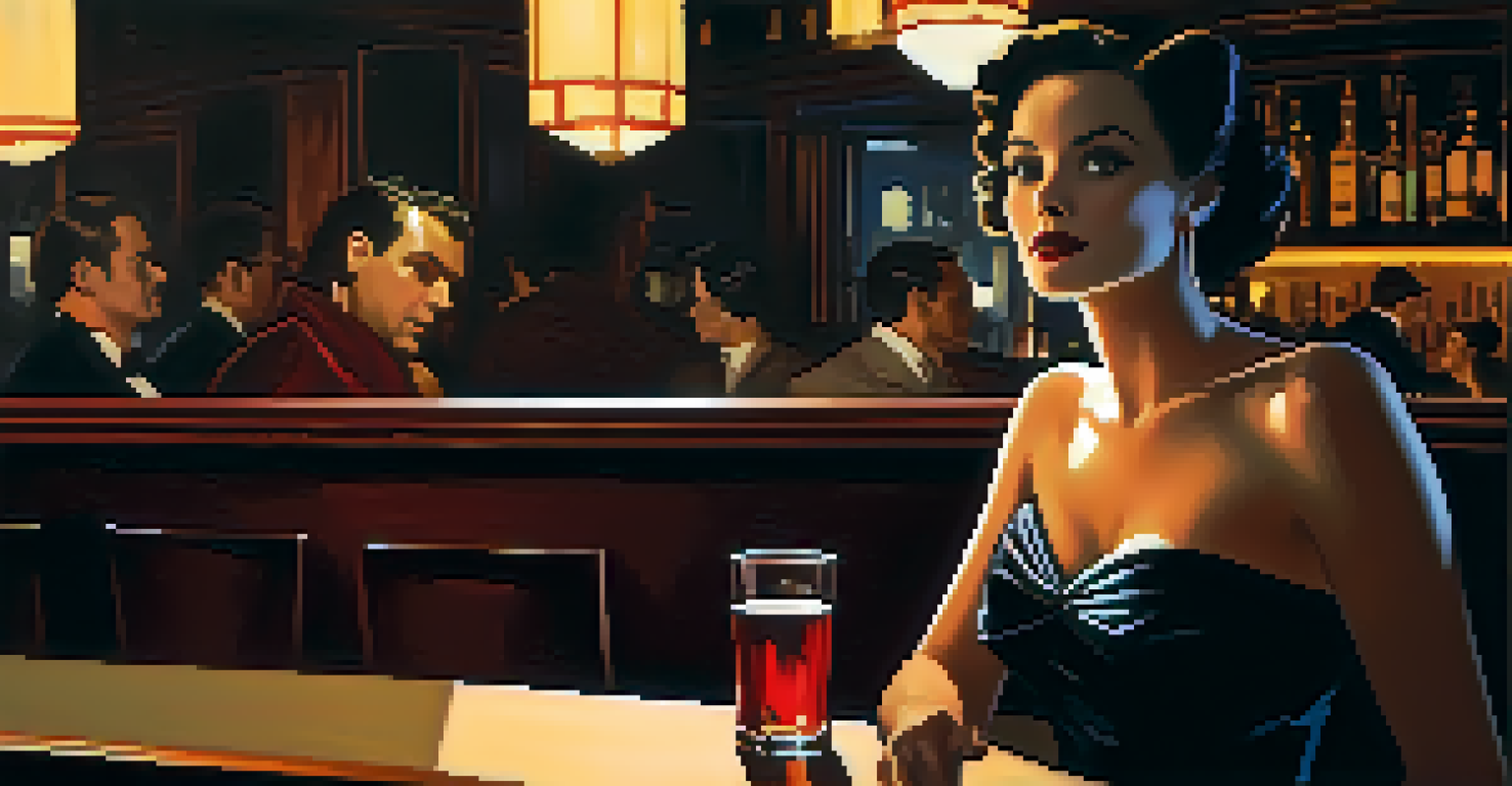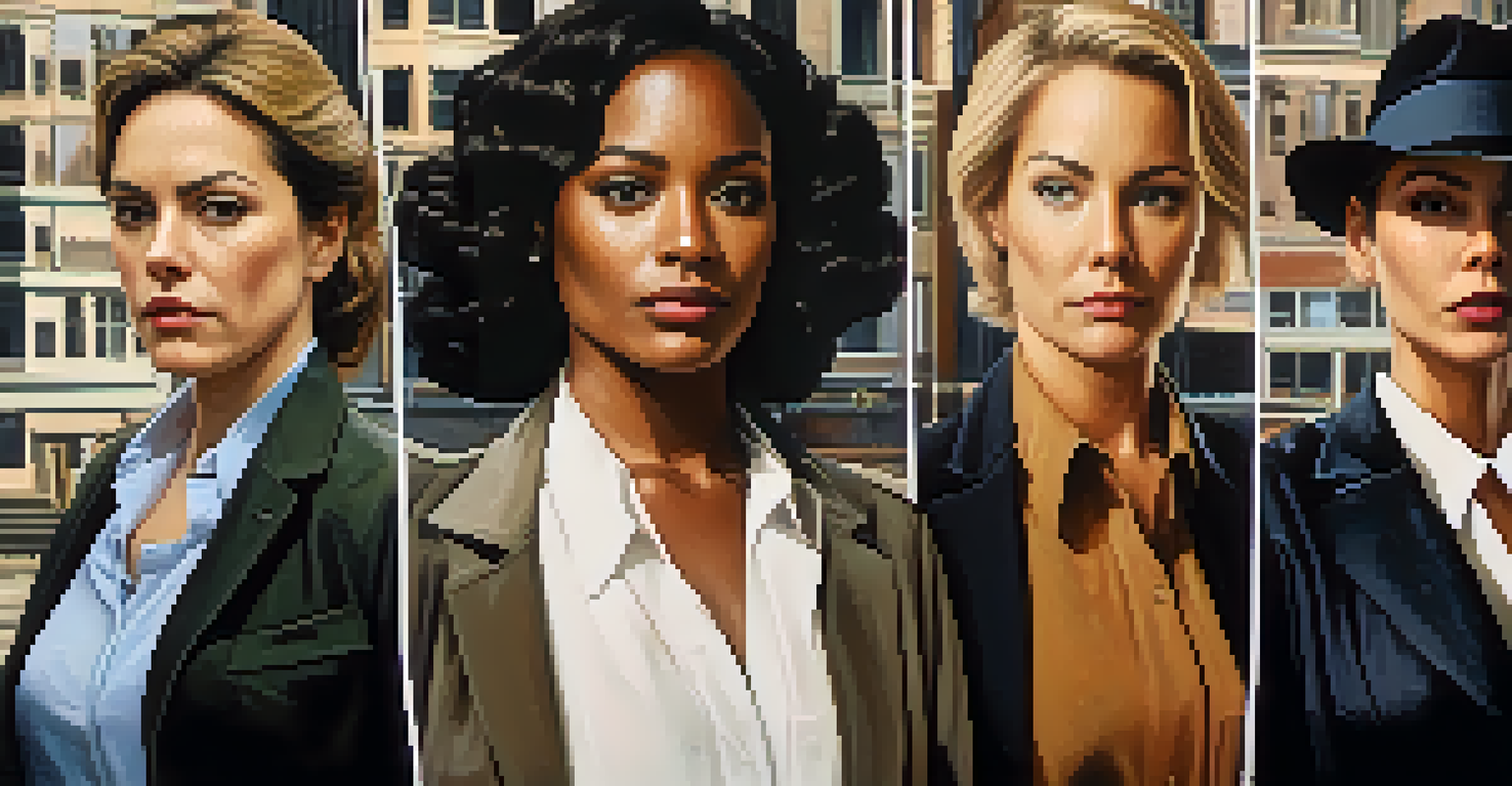Hollywood's Gendered Lens: Women in Crime and Justice

The Evolution of Women in Crime Genres
From femme fatales to fierce detectives, women's roles in crime films have evolved significantly over the decades. Initially, women were often depicted as mere side characters or love interests, primarily serving to further the male protagonist's story. However, as societal attitudes towards gender have shifted, so too have the narratives, allowing for more complex and leading roles for women.
I’m not a damsel in distress. I’m a woman in progress.
The 1990s marked a turning point, with films like 'The Silence of the Lambs' showcasing women not just as victims but as empowered characters who could outsmart their male counterparts. This evolution reflects broader cultural changes and the demand for more authentic female representation in media. It’s fascinating to see how these portrayals have inspired real-life conversations about women's roles in law enforcement and justice.
Today, films and series like 'Killing Eve' and 'The Girl with the Dragon Tattoo' continue this trend, presenting multifaceted female characters who navigate the gritty world of crime. These narratives challenge traditional gender roles and provide a platform for discussions about women's experiences in patriarchal societies.
Stereotypes and Misrepresentation in Crime Media
Despite progress, stereotypes about women in crime and justice narratives persist. Often, women are still boxed into specific roles, such as the 'damsel in distress' or the overly emotional detective, which can undermine their capabilities and contributions. These stereotypes not only affect how audiences perceive women but also influence the opportunities available to female actors and creators.

For instance, the portrayal of women as overly emotional can reinforce the idea that they are less competent in high-stakes situations, such as criminal investigations. This narrow representation can lead to a lack of diversity in storytelling, ultimately affecting the quality and authenticity of the narratives being told. It's crucial for filmmakers to break away from these clichés to create more realistic and empowering portrayals.
Evolving Female Roles in Crime Media
Women's portrayals in crime films have transformed from mere side characters to complex leads, reflecting broader societal changes.
Moreover, these misrepresentations can have real-world implications, shaping public perceptions of women in law enforcement and the justice system. When crime dramas fail to depict women as capable leaders or intelligent strategists, it diminishes the recognition of women's contributions to these fields in reality.
Influential Female Characters in Crime Films
Several female characters have become iconic within the crime genre, demonstrating the strength and complexity women can embody. Characters like Clarice Starling from 'The Silence of the Lambs' and Lisbeth Salander from 'The Girl with the Dragon Tattoo' have not only captivated audiences but have also served as symbols of resilience and intelligence in the face of adversity. Their journey through crime and justice reflects the struggles many women face in real life.
Women have to harness their power—to choose to be active participants in their own stories.
These characters often navigate male-dominated environments, showing that women can be just as formidable as their male counterparts. Their stories resonate with viewers, providing a sense of empowerment and encouraging discussions about gender equity in various fields. As audiences connect with these characters, they challenge the traditional notions of femininity and strength.
Moreover, these powerful portrayals inspire a new generation of female filmmakers and writers, encouraging them to create their own narratives that reflect the complexities of women's experiences in crime and justice. By showcasing strong female leads, the industry can continue to push for more authentic and diverse representations.
The Role of Female Filmmakers in Shaping Narratives
As more women step into directorial and writing roles, the narratives surrounding crime and justice are becoming richer and more nuanced. Female filmmakers bring unique perspectives and experiences, allowing for a deeper exploration of women's roles in these stories. For instance, director Ava DuVernay's work often highlights social justice themes that resonate with contemporary issues faced by women.
These filmmakers are not only challenging gender norms but are also redefining the crime genre itself. By focusing on the emotional and psychological aspects of crime, they create multifaceted narratives that go beyond the traditional action-driven plots. This shift allows audiences to engage with the material on a more personal level, fostering empathy and understanding.
Impact of Female Filmmakers
Female directors and writers are redefining crime narratives by incorporating diverse perspectives and emotional depth.
Furthermore, female filmmakers often prioritize collaboration with women in front of the camera, leading to a more authentic representation of women's voices and stories. This collaborative spirit is essential in creating a diverse film landscape that accurately reflects the complexities of women's experiences in crime and justice.
Real-Life Inspirations Behind Fictional Stories
Many crime films and shows draw inspiration from real-life women who have made significant contributions to law enforcement and justice. Figures like police chief Sandra Hutchens and prosecutor Marcia Clark have paved the way for women in traditionally male-dominated fields. Their stories often serve as a backdrop for fictional narratives, providing a sense of authenticity and relatability.
By incorporating elements based on real-life experiences, filmmakers can create more compelling stories that resonate with audiences. This blend of fact and fiction helps to highlight the complexities women face in the criminal justice system, encouraging viewers to reflect on societal issues and the progress still needed for gender equality.
These real-life inspirations not only enrich the narratives but also empower women watching these films, showing them that they too can break barriers and excel in their careers. It’s a reminder that the stories we see on screen are often rooted in the incredible achievements of women who have fought against the odds.
The Intersection of Gender and Race in Crime Narratives
While discussions about gender in crime films are crucial, it’s equally important to consider the intersection of gender and race. Women of color often face additional challenges in representation, frequently depicted in stereotypical roles or sidelined in narratives. This lack of diversity can perpetuate harmful stereotypes and limit the scope of storytelling in the crime genre.
For example, characters like Annalise Keating from 'How to Get Away with Murder' challenge these stereotypes by being complex, powerful, and flawed individuals. She represents a shift towards more nuanced portrayals of women of color in crime narratives, highlighting their struggles and victories. This shift is essential in creating a more inclusive and representative film industry.
Real-Life Inspirations Matter
Many crime stories draw from real-life women in law enforcement, enriching narratives and showcasing the achievements of women.
By addressing both gender and race, filmmakers can create richer stories that reflect the realities of diverse women's experiences in the criminal justice system. This approach fosters a deeper understanding and appreciation of the challenges faced by women from various backgrounds, ultimately leading to more impactful storytelling.
The Future of Women in Crime and Justice Media
Looking ahead, the future of women in crime and justice narratives appears promising, with more opportunities for authentic representation on the horizon. As audiences demand diversity and complexity in storytelling, filmmakers are recognizing the importance of showcasing women's experiences in all their diversity. This shift is paving the way for new voices and stories to emerge.
The rise of streaming platforms has also played a significant role in this evolution, allowing for a broader range of narratives that might not fit traditional Hollywood molds. With more platforms available, creators have the freedom to explore unique stories that center around women's experiences in crime and justice, leading to a richer film landscape.

Ultimately, the continued push for gender equality and representation in the industry will shape how women are portrayed in crime narratives for years to come. By supporting diverse voices and stories, audiences can help ensure that women are seen not just as victims or side characters, but as integral parts of the narratives that reflect our society's complexities.